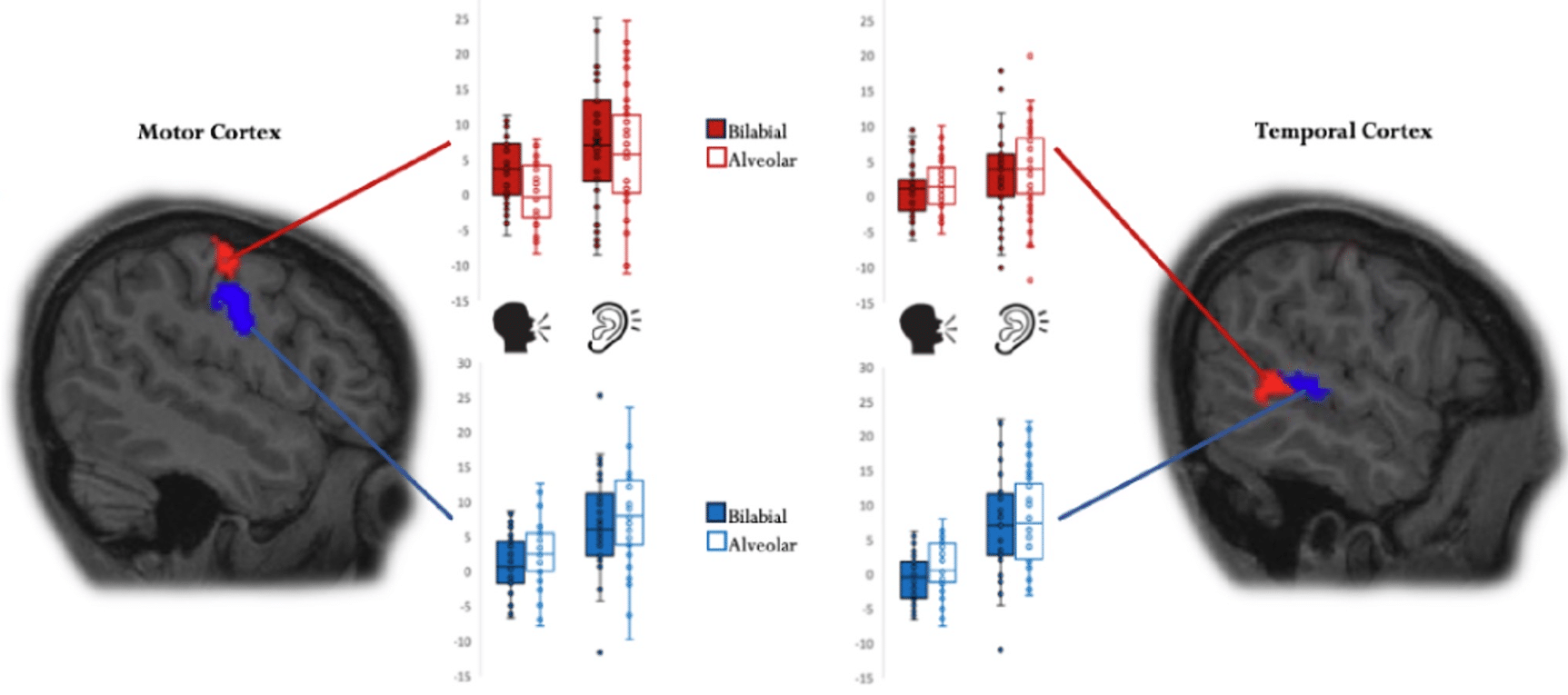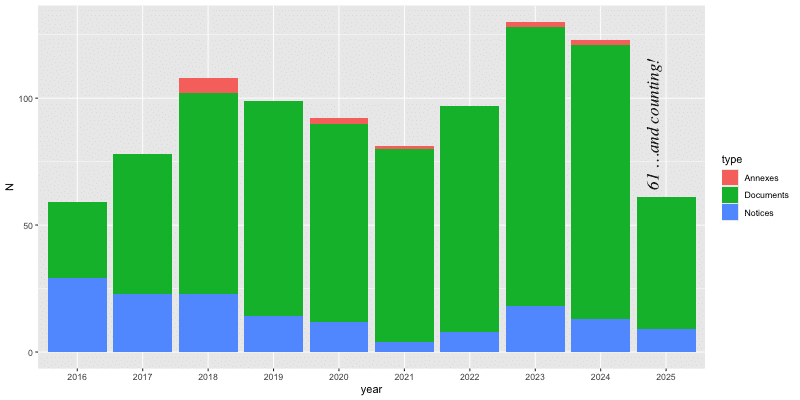Shared phonological networks in frontal and temporal cortex for language production and comprehension

Neurobiological models of language disagree about the degree of neural overlap between the speaking and understanding. ‘To investigate this open issue, participants (N = 37) were asked to name out-loud object names and passively listen to the same words — minimal pairs only differing in their first phoneme, alveolar as in ‘Talon’ vs. bilabial as in ‘Ballon’. For both language modalities, the motor cortex was activated topographically, i.e. with stronger tongue activity for alveolar words and stronger lip activity for bilabial words. The temporal cortex was activated in a distributed manner. These results strongly support Integration Models (e.g., Pulvermüller, 1999; 2018; Strikers & Costa, 2016), which posit shared word representations for language production and comprehension.
Dmitrieva, X., Anton, J.-L., Fairs, A., Ivanova, B., Sein, J., Nazarian, B.,
Dufour, S., Pulvermüller, F., Runnqvist, E., & Strijkers, K.
(2025). Cerebral Cortex, 35(10), bhaf275. — @HAL
Modelling a Complex Cognitive System with Limited Data: Optimization and Generalization in a Computational Model of Reading Aloud
Conrad Perry, Marco Zorzi, and Johannes C. Ziegler.
2025. PLOS Complex Systems 2 (11): e0000074. — @HAL
Humour from 12 to 36 Months: Insights into Childrens Socio-Cognitive and Language Development
Chiara Mazzocconi, and Béatrice Priego-Valverde.
2025. Infant Behavior and Development 81 (December): 102129 — @HAL
Pre-Attentive Pitch Processing of Harmonic Complex Sounds at Sensor and Source Levels: Comparing Simultaneously Recorded EEG and MEG Data
Talya C. Inbar, Jean-Michel Badier, Christian Bénar, Khoubeib Kanzari, Mireille Besson, and Valérie Chanoine.
2025. Brain Topography 38 (6): 71 — @HAL
An Underexplored Use of Connector “Mais” in French Conversation: Discursive and Prosodic Correlates of the Overbid Use
Marie Kolenberg, Cristel Portes, Stéphane Rauzy, and Roxane Bertrand.
2025. Discourse Processes, October 14, 1–22. — @HAL
Bioacoustic Fundamental Frequency Estimation: A Cross-Species Dataset and Deep Learning Baseline
Paul Best, Marcelo Araya-Salas, Axel G. Ekström, et al.
2025. Bioacoustics 34 (4): 419–46. — @HAL
Neural and Behavioral Dynamics of Predictive Speech Planning
Emma Berthault, Sophie Chen, Sonja A. Kotz, and Daniele Schön.
2025. Journal of Cognitive Neuroscience, September 22, 1–14 — @HAL
ILCB publications on HAL

We all know that bibliometrics is no longer a thing…
Still, see how much choice you have next time you want to read an ILCB paper, all freely available on HAL!
We remind you that acknowledging ILCB support when it is due provides vital information about the dynamism of our institute; when you do so, you should also tag your HAL deposit to make it part of the ILCB HAL collection.
Straightforward instructions are available for wording acknowledgments and for HAL collection tagging.
Agent Preference in Chasing Interactions in Guinea Baboons ( Papio Papio ): Uncovering the Roots of Subject–Object Order in Language
Floor Meewis, Joël Fagot, Nicolas Claidière, and Isabelle Dautriche.
2025. Psychological Science 36 (6): 465–77. — @HAL
Spontaneous Modulation of Standard EEG Frequency Bands During a Neurofeedback‐Like Task
Jacob Maaz, Véronique Paban, Laurent Waroquier, and Arnaud Rey.
2025. Psychophysiology 62 (10): e70163. — @HAL
